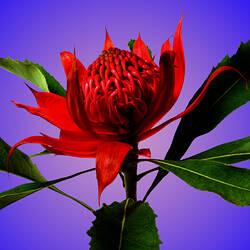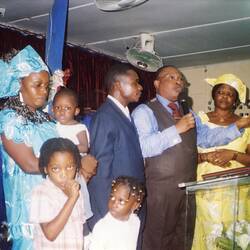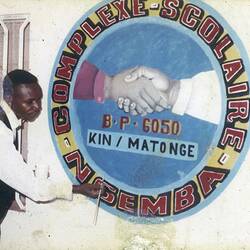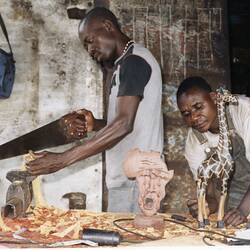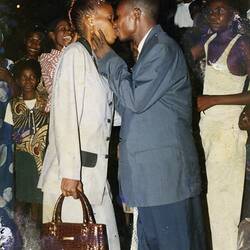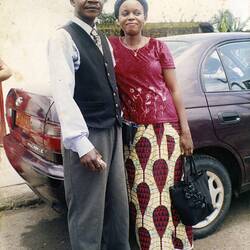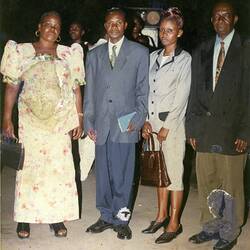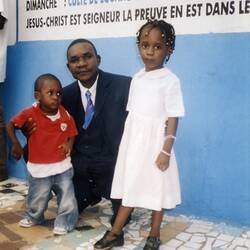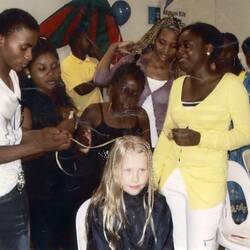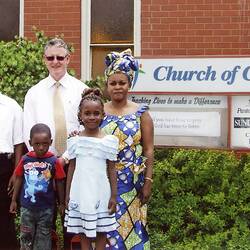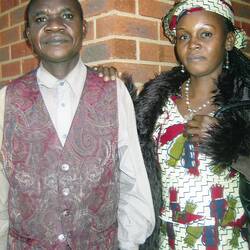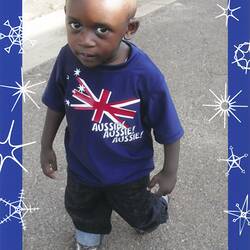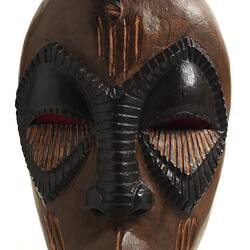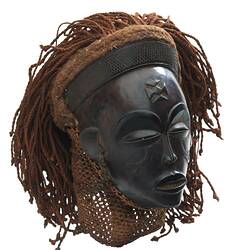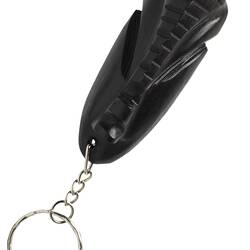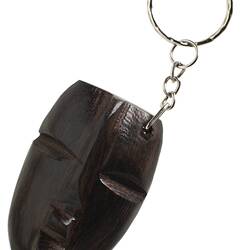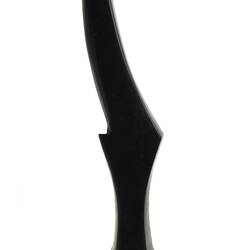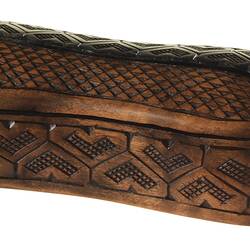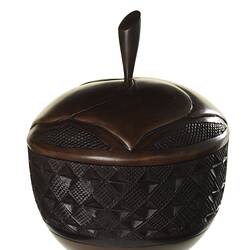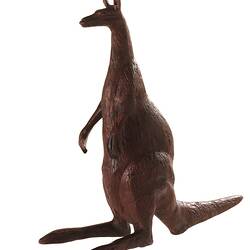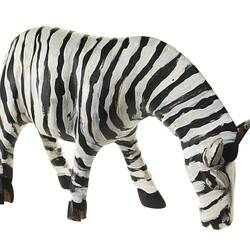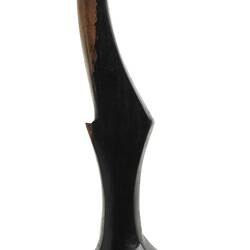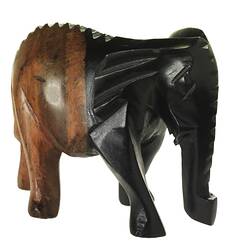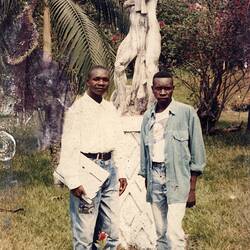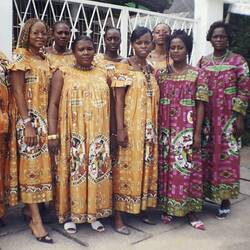Summary
Nickel Mundabi Ngadwa and his family has been force to flee his homeland, moving from Congo to Cameroon and finally seeking refuge in Australia in 2009. He has continued his artistic practice and is part of a growing Congolese community in Shepparton in northern Victoria.
Nickel Mundabi Ngadwa (1965 - ) grew up and was educated in Kinshasa, Democratic Republic of Congo (DRC). He married Gertrude Ntumba Lenda in 1999. He has a son from a previous marriage, Gaspy and three children with Gertrude. They are Christian as are the majority of Congolese people.
Forced to Flee
Nickel's father was an officer in Joseph-Desiré Mobutu's army. Mobutu was president of the DRC from 1965 to 1997 (named Zaire 1971-1997). He was overthrown by Laurent Kabila, who was supported by Rwanda, Burundi and Uganda in the First Congo War in 1997. Kabila was assassinated in 2001 and his son, Joseph Kabila replaced him. Nickel's father was arrested because of his association with the Mobutu regime in 2000, forcing Nickel to flee Kinshasa. He recalls: 'I left Congo, since my father, he was an officer in the army of the old regime... with the regime now in power, the Kabila regime, my father was arrested and he was taken, I still don't know where . you know when - your father is arrested, chances are that the rest of your family will get exterminated. .. One day, I was at school, I was teaching, there was a friend of my father who came to tell me that "You have to leave. If you don't leave now . you will be killed like your father."'
Nickel fled with his nephew, Guillian, who was attending the same school at which Nickel was teaching. They crossed the Congo River into Brazzaville, Republic of Congo and then made their way to Kisangani as they thought it would be safe there. Gertrude was staying with Nickel's family in Kisangani because she was pregnant with their first son, Exaucé. Ten days after she gave birth, rebels came to the family home and brutalised everyone. Gertrude fled with the children and Nickel's sister on foot into the Central African Republic. The rebels took Nickel and Guillian away in a jeep but when they heard gunshots, the leapt out and ran. They took canoes along the Congo River to Bumba and then walked to Yakoma on the border of the DRC and the Central African Republic (CAR). They hid in a camp across the border with an order of Catholic nuns who told them that it was not safe so they continued to Douala, Cameroon. The entire journey took between four and five months.
New Life in Cameroon
Between 1999 and 2002, Kisangani was the site of numerous deadly armed battles between Ugandan and Rwandan troops in what is known as the Second Congo War. This conflict is the deadliest war in modern Africa and directly involved nine African countries and at least 20 armed groups. It began in 1998 and officially ended in July 2003, although hostilities and violence continue to the present day.
In 2004, the United Nations High Commissioner for Refugees (UNHCR) in Douala informed Nickel that his wife was looking for him. He arranged to meet her at the border of Cameroon and CAR before taking her to Douala. Gertrude, unsure if it was really Nickel, had left the children with Nickel's sister in Béma, CAR. When Nickel saved enough money, he sent Guillian to look for them in Béma but they had disappeared. Thus Guillian, as well as Nickel's sister, were missing. While in Douala, Nickel worked and he and Gertrude had two more children, Jesmira and Christian.
In 2006 the UNHCR asked him to create some art pieces for International Refugee Day. After this, the Cameroonian government assisted him to create a workshop. As an urban-based refugee he was able to work as an artist to support himself and his family, although life was still very difficult. According to the UNHCR, more than half of the refugees it serves are urban-based refugees, presenting different challenges for life in a refugee camp. Despite the apparent freedom to make a living, urban-based refugees are likely to suffer exploitation, arrest and detention as their legal documents are not always respected.
Seeking Refuge
In 2009, the Australian government accepted the family into the Humanitarian program and settled them in Shepparton in northern Victoria. Nickel has made a name for himself as a professional artist in Shepparton and in Victoria. He continues to attend English classes and hopes to make a living from his art. Both Gaspy and Exaucé were found in 2011 and are currently in the process of migrating to Australia. Nickel and Gertrude's youngest child, Jovahni, was born in 2012.
Congloese Community in Shepparton Victoria
The Shepparton Regional Humanitarian Pilot program began in 2005, with ten Congolese families settled there and the community continues to grow. Humanitarian entrants originating from the DRC are settled in Shepparton either through the Department of Immigration or of their own volition from other Australian cities. As of June 2013, there were 23 families consisting of approximately 160 people. The Democratic Republic of Congo consists of between 200 and 250 ethnic groups with approximately the same number of different languages. French is the official language, taught in high school and there are four national languages of Kikongo, Tshiluba, Lingala and Swahili. The ethnic and linguistic make-up of the Congolese community in Shepparton is diverse with members speaking any of the four national languages and sometimes French. The majority of the community in Shepparton speak Swahili while a smaller group, including the Mundabi family, speak Lingala.
References
http://www.unhcr.org/pages/4b0e4cba6.html
http://www.ethniccouncilshepparton.com.au/uploads/Congolese_Community_Profile_-_RAP_2013.pdf
More Information
-
Keywords
-
Localities
-
Authors
-
Article types

